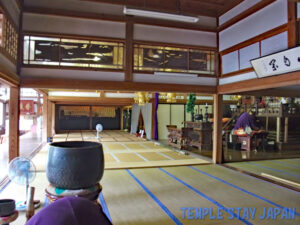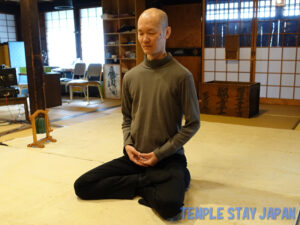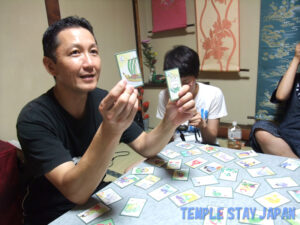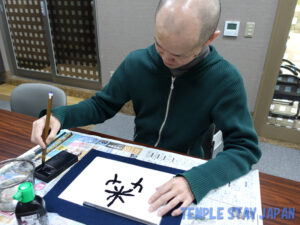History Natadera temple used to be a holy place to worship gods in ancient times. There are many rocks and caves in this place. The caves are like the wombs of mothers and are believed to be places where one’s soul is purified before birth and the cradles of souls.
So, people entered the caves and prayed to purify their sins while they were still alive and they thought that they had been purified when they came out.
This is why gods had been worshipped inside the Iwaya caves. Partly because the Iwaya caves are facing Mount Hakusan, a sacred mountain, the Iwaya Main Hall was built at a place with a commanding view of Mount Hakusan, which later became Natadera temple.
Still now, picturesque beautiful scenery is maintained inside the precinct, which is also home to important cultural assets including the Shoin (study room), Main Hall, Daihikaku Worship hall, Karamon gate, three-storied pagoda and the Goma-do hall and attracts many visitors.
Shukubo (Temple stay)
Natadera’s shukubo “Ikumo” is located at the top of Mount Engyo, with an altitude of 470 meters.
The view from the shukubo is really wonderful. The scenery of the Kaga Plane, the Japan Sea and sacred Mount Hakusan spreads out before the lodge.
They serve shojin vegetarian cuisine, including cooked vegetables, tempura using local vegetables and imitation sukiyaki using soy beans instead of beef. Sesame tofu, their specialty and specially produced Ikumo-sake were also available.
If the weather is good, you can eat breakfast on the porch.
Outdoor bath
Also the shukubo is equipped with advanced eco-friendly facilities, including a solar energy system, a reverse osmosis membrane system for water and recycling system, etc. It is trying to minimize drain water and CO2 emissions, so as to maintain harmony with the nature.
Here and there, you will find their efforts to produce quiet relaxation, such as in the outdoor bath made out of a monolith or in front of the fireplace made in Finland.
Activities The experience menu includes musical meditation and shakyo (copying sutra by hand). In the morning, they hold a Shinto fire festival, where people burn tags on which their wishes are written so that the wishes reach heaven in the smoke.
Booking Link
Natadera Ikumo official website




